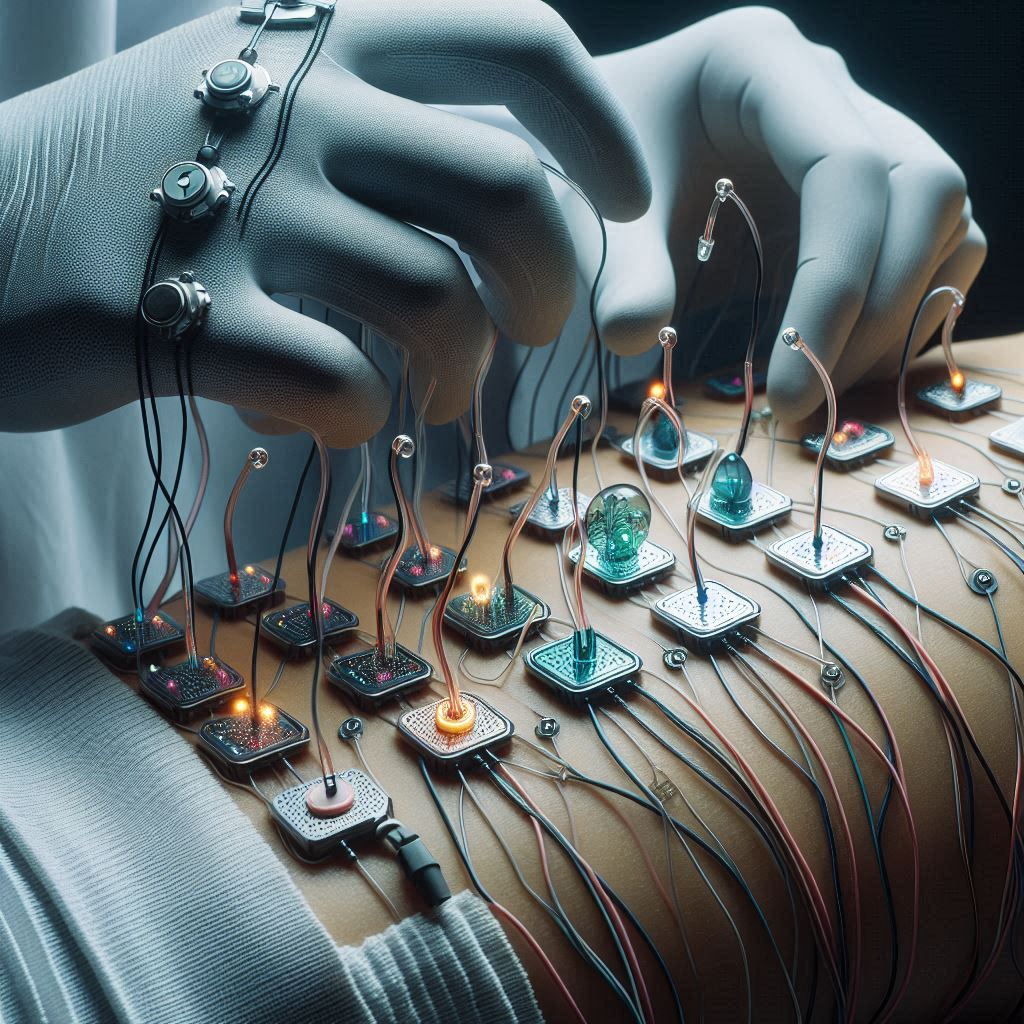The lab of Professor Bozhi Tian has been studying the integration of the hard, metallic, bulky world of electronics with the soft, flexible, and sensitive world of the body for many years.
In their most recent work, they have developed a prototype for what they refer to as “living bioelectronics”—a gel, electronics, and live cell combination that can be integrated with living tissue.
The patches consist of bacterial cells, starch and gelatin gel, and sensors. In tests on mice, the gadgets were able to continually track and enhance symptoms similar to psoriasis without causing skin irritation.
This is a bridge from traditional bioelectronics, which incorporates living cells as part of the therapy.
Jiuyun Shi
We’re very excited because it’s been a decade and a half in the making.
Professor Bozhi Tian
It is the goal of the researchers that these concepts may be extended to other areas of the body, such as cerebral or cardiovascular stimulation.
The findings were published in the journal Science.
Connecting technology to the human body has never been easy. Even though gadgets like pacemakers have saved many lives, they do have certain disadvantages. For example, electronics can irritate people and are often heavy and inflexible.
However, the focus of Tian’s group is on understanding the basic principles underlying the interactions between artificial materials and biological cells and tissue. One example of their prior work is a small pacemaker that can be operated by light, robust, and flexible materials that may eventually be used to create bone implants.
This study employed a novel methodology. Bioelectronics are often made out of the electronics themselves plus a soft covering to reduce bodily irritation.
However, Tian’s team questioned if they could incorporate live cells as a third component to offer additional capabilities. The researchers were fascinated by the ability of some bacteria, such S. epidermidis, which is a naturally occurring microorganism on human skin and has been demonstrated to decrease inflammation, to have healing qualities.
They developed a three-component gadget. The framework is a flexible, thin, sensor-equipped electronic circuit. It is covered in a very soft gel made of tapioca starch and gelatin that resembles the tissue itself. Lastly, the gel contains S. epidermidis bacteria.
The microorganisms on the gadget release substances that lessen inflammation while the sensor senses signals from the skin, such as humidity and temperature.
There was a noticeable decrease in symptoms in experiments conducted on mice predisposed to skin disorders similar to psoriasis.
The system, which the researchers refer to as the ABLE platform, for Active Biointegrated Living Electronics, was tested for a week, but they anticipate that it will be useful for at least six months. They claimed that the device could be simply rehydrated when needed and freeze-dried for storage, making the therapy more practical.
Since the healing effects are provided by microbes, “It’s like a living drugyou don’t have to refill it”.
Saehyun Kim
Apart from managing psoriasis, the researchers foresee envision using patches to expedite the healing of wounds in individuals with diabetes.
They also intend to apply the method to different cell and tissue types.
For example, could you create an insulin-producing device, or a device that interfaces with neurons?,
There are many potential applications.
Professor Bozhi Tian
Tian stated that he has had this objective since he started experimenting with “cyborg tissues” around 15 years ago while working as a postdoctoral researcher.
Since then, we’ve learned so much about the fundamental questions, such as how cells interface with materials and the chemistry and physics of hydrogels, which allows us to make this leap,
To see it become reality has been wonderful.
Professor Bozhi Tian
Also Read| New therapy to prevent Antibody-Mediated-Rejection (AMR) of kidney transplant
My passion has always been to push the boundaries of what is possible in science,
I hope our work could inspire the next generation of electronic designs.
Jiuyun Shi
Source: University of Chicago News
Journal Reference: Shi, Jiuyun, et al. “Active Biointegrated Living Electronics for Managing Inflammation.” Science, 2024, https://doi.org/adl1102.






